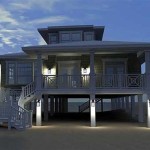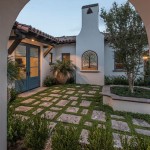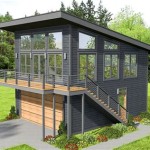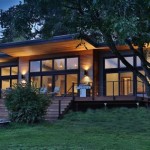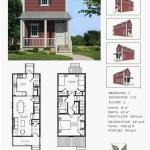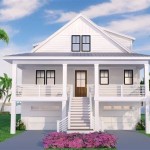Home Plans for Multiple Families
The concept of multi-family homes is gaining popularity, offering a diverse range of advantages for both builders and residents. Whether driven by the need for intergenerational living, financial considerations, or simply a desire for shared community, these homes provide a unique blend of privacy and togetherness. When planning a multi-family dwelling, careful consideration must be given to various aspects, including the number of families, their individual needs, and the desired level of shared space. This article explores key considerations for designing home plans for multiple families, highlighting the design elements and features that ensure a harmonious and functional living environment for all residents.
Defining the Scope and Needs of Each Family
The first step in planning a multi-family home is to clearly define the needs of each family unit. This involves understanding their size, lifestyle, and preferences. For instance, a family with young children will require different amenities and space allocation compared to a retired couple. This initial stage involves:
-
Determining the number of families:
This sets the foundation for the overall structure and layout of the home. -
Identifying the age and family composition:
Understanding the age groups and family dynamics provides insights into the necessary space requirements, such as bedrooms, bathrooms, and common areas. -
Assessing lifestyle preferences:
This involves considering activities, hobbies, and overall lifestyle choices. For example, a family that enjoys entertaining might prioritize a spacious living room, while a family that prefers privacy might opt for separate entrances and private outdoor spaces. -
Defining individual needs and accessibility requirements:
This ensures the home is designed to accommodate any special needs, such as mobility challenges or senior living considerations.
This comprehensive understanding of each family's needs serves as a blueprint for the subsequent design phases, ensuring the home plan caters to the individual requirements of all residents.
Designing for Shared Spaces and Privacy
Achieving the delicate balance between shared spaces and individual privacy is crucial for multi-family homes. The design should promote a sense of community while respecting each family's desire for personal space. This can be achieved through strategic planning of common areas and private zones.
Shared Spaces
-
Centralized Entryway:
A welcoming and spacious entryway serves as a point of connection for all residents, encouraging interaction and fostering a sense of community. -
Multi-Purpose Room:
A dedicated space for shared activities, such as a family room, game room, or media room, provides a hub for family gatherings and shared entertainment. -
Shared Kitchen and Dining:
A well-designed kitchen and dining area encourage communal meals and interaction, fostering a sense of connection among residents. -
Outdoor Spaces:
Shared outdoor spaces, such as a patio, garden, or backyard, offer opportunities for recreation and socialization.
Private Zones
-
Separate Entrances:
Providing separate entrances for each family unit ensures privacy and autonomy. -
Dedicated Living Spaces:
Each family should have their own living rooms and bedrooms, creating a sense of privacy and personal space. -
Private Outdoor Spaces:
Individual balconies, patios, or decks provide each family with their own retreat and personal outdoor space.
By strategically combining shared and private elements, the design creates a living environment that balances community, privacy, and individual preferences.
Maximizing Functionality and Efficiency
Designing a multi-family home that is both functional and efficient is essential for long-term satisfaction. This involves considering the flow of traffic within the house, maximizing natural light, and optimizing space utilization.
Space Optimization
-
Open Floor Plans:
Open floor plans create a sense of spaciousness and flow, maximizing the use of available space. -
Built-in Storage:
Incorporating built-in storage solutions, such as cabinets, shelves, and drawers, optimizes space and minimizes clutter. -
Multi-Purpose Rooms:
Designing rooms with multiple functions, such as a home office that doubles as a guest room, maximizes space utilization.
Natural Light and Ventilation
-
Large Windows:
Large windows allow natural light to flood the interior spaces, creating a bright and airy ambiance. -
Skylights:
Skylights bring in natural light and ventilation, especially for interior rooms that lack windows. -
Cross-Ventilation:
Designing for cross-ventilation promotes air circulation and helps create a comfortable living environment.
By incorporating these design elements, the home plan ensures a functional and efficient living space for all residents, maximizing comfort and minimizing wasted space.

3 Unit Multi Plex Plans

Multi Family Plan 4285

6 Unit Multi Plex Plans

Fordyce Crest Multi Family Home House Plans And More Duplex Floor

Multi Family Plan W3062 Detail From Drummondhouseplans Com House Floor Plans Small

How To Build The Perfect Multi Generational Home Plans Included Oberer Homes

3 Unit Multi Plex Plans

Attractive Two Family Home Plan 21245dr Architectural Designs House Plans

Duplex 1 Floor Plan Planes Familiares En Casa Planos Casas Una Planta De

Traditional Multi Unit House Plans Home Design Heather Ridge 3941
Related Posts

